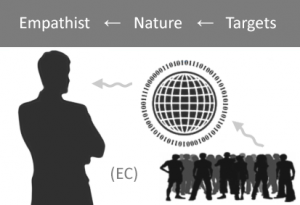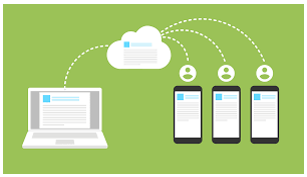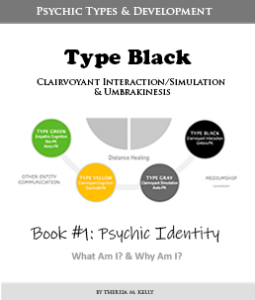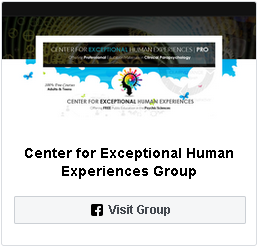EMPATHIC COGNITION – PART I
The two main types of extrasensory perception talked about before, telepathy and clairvoyance, may seem somewhat similar too, but are actually quite different. Telepathy involves a connection and influence between two minds, while clairvoyance involves a connection and influence between the state of a physical object, person, or situation to a mind. This means that nature, or the universe, as a whole is always aware of the physical state of affairs, which in turn communicates such information to a mind. It helps if you think of the universe as one big computer or living brain that is aware, can think, and can form memories.

This difference between telepathy and clairvoyance is taken to be a difference between two forms of experiences. The goal of telepathic experiences is assumed to involve a person’s thoughts or mental states (example: how a person feels, thinks). In contrast, the goal of clairvoyant experiences is assumed to involve a physical situation or event that may or may not include other people.
This is viewed as telepathy being “direct,” since it involves a direct connection between two minds; whereas clairvoyance is viewed as “indirect,” because it only results in finding out about the physical situation of a thing or person, rather than directly finding out about a person through the person them self.
There are three sub-types of Psychic Empathy:
- Empathic Cognition(EC) applies whenever emotional information only is clairvoyantly received by the experiencer from an environment/situation, involving a group of people.
- Empathic Interaction(EI) applies whenever emotional information only is telepathically received by another person originating from the experiencer.
- Empathic Simulation(ES) applies emotional information only is shared between the experiencer and another person.
 The main feature of Empathic Cognition is the indirect knowledge of the combined or collective emotional experience of a large group or population of people.
The main feature of Empathic Cognition is the indirect knowledge of the combined or collective emotional experience of a large group or population of people.
This combined or collective emotional experience retrieved from:
The group (targets) by the environment (Nature or global/universal consciousness) →, passed through the environment →, and then received by the experiencer (empathist) X.
 In cases of empathic cognition, or empathic clairvoyant cognition, the experiencer is retrieving information from the environment or “Nature” and therefore can “pick up on” current collective emotional states of large to very large groups of people, animals, and even plants.
In cases of empathic cognition, or empathic clairvoyant cognition, the experiencer is retrieving information from the environment or “Nature” and therefore can “pick up on” current collective emotional states of large to very large groups of people, animals, and even plants.
 This is to say that even if the collective emotional experience is current, or happening right now, it is thought that Nature “knows” about the collective emotional experience and therefore has a “record” of the experience in real-time.
This is to say that even if the collective emotional experience is current, or happening right now, it is thought that Nature “knows” about the collective emotional experience and therefore has a “record” of the experience in real-time.
The information system from which the collective emotional experience record come from DOES appear to play an intentional part in the emotional information sending/receiving process.
 In other words, the process is not thought to be entirely started by the experiencer alone, but rather Nature itself seems to provide an ever-present (always present, always existing) role in the survival or general well-being of the experiencer.
In other words, the process is not thought to be entirely started by the experiencer alone, but rather Nature itself seems to provide an ever-present (always present, always existing) role in the survival or general well-being of the experiencer.
Again, with empathic clairvoyant cognition the experiencer is a person with clairvoyant empathy that is capable of starting clair-empathic processes or openly allows Nature to start clair-empathic processes when needed either consciously or subconsciously by the experiencer.
 Here, the experiencer will become aware of Nature-based information (fluctuations in the collective emotional states of large groups), but the experiencer should be able to tell clearly that the emotional information did not come from their own mind, but from somewhere else.
Here, the experiencer will become aware of Nature-based information (fluctuations in the collective emotional states of large groups), but the experiencer should be able to tell clearly that the emotional information did not come from their own mind, but from somewhere else.
In other words, the emotional information is received and perceived by the experiencer, but the emotional information did not develop from a chain events or feelings belonging to the experiencer.
Instead, the emotional experience appears to “pop up” into the experiencers mind but is either immediately connected with a particular large group or population or it could be simply identified as not starting from the experiencer without knowing specifically where the large group is located.
 Identifying location or figuring out specific information about groups comes with experience, research, and practice. Identifying location and specific information can also be helped by other psychic experiences such as clairvoyant cognition and telepathic cognition.
Identifying location or figuring out specific information about groups comes with experience, research, and practice. Identifying location and specific information can also be helped by other psychic experiences such as clairvoyant cognition and telepathic cognition.
 If emotional information is ever sent about the future or the past rather than current events, then the experiencer may be experiencing clairvoyant cognition rather than empathic cognition as empathic cognition is focused only on current events.
If emotional information is ever sent about the future or the past rather than current events, then the experiencer may be experiencing clairvoyant cognition rather than empathic cognition as empathic cognition is focused only on current events.
In other words, if you are Type Green, but lean towards Type Yellow or Type Gray, you may be experiencing more than just empathic cognition.
 A good technical analogy for how empathic cognition works is as though a computer (or experiencer) is tasked to collect information one time in real-time through the cloud (Nature or environment information system) and off of a very large amount of people’s cell phones (group or population).
A good technical analogy for how empathic cognition works is as though a computer (or experiencer) is tasked to collect information one time in real-time through the cloud (Nature or environment information system) and off of a very large amount of people’s cell phones (group or population).
In this analogy, the computer/experiencer starts the process, sends a request to the cloud of which already has the information available or is about to receive it. The information is then sent from the cloud to the computer.
 In other cases, the cloud can be tasked by the computer to send all relevant information deemed important to the computer in real-time and be set to “keep an eye out” 24/7.
In other cases, the cloud can be tasked by the computer to send all relevant information deemed important to the computer in real-time and be set to “keep an eye out” 24/7.
This second case means the information sharing task is working in the background all the time, which can result in many information responses rather than just one.






